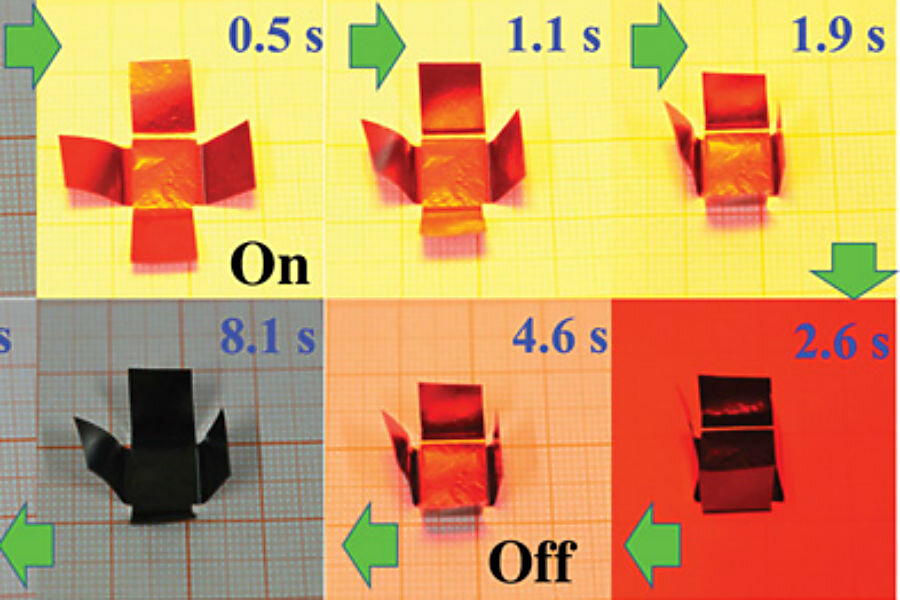How researchers made self-folding origami with graphene paper
Loading...
Inspired by origami, a team of researchers at Donghua University in China has discovered a method using heat and infrared light to move small objects made of graphene sheets.
Origami is the art of folding paper, but in this case, it’s two kinds graphene sheets that are one atom thick, infused with hydrogen and oxygen compounds. By absorbing water from the air, special sections can manipulated to shrink, bend, and move around when the paper is heated.
"In the near future, it even could bring changes to people's lives," Jiuke Mu, a Ph.D. student at Donghua University told Live Science.
As one of the researchers on the project, Mu gave an example of smart clothing that “could change its shape and style in response to body temperature, environmental changes or other gentle stimulations.”
Other future possible uses derived from the research include miniature robots, artificial muscle, and tissue engineering.
Published in the journal, “Sciences Advances,” the technology entails combining graphene sections that react to water and sections that do not, and when the former shrinks to heat, it pulls against the latter and exerts a force. This led to the creation of joints, not unlike a paper box unfolding at its edges.
In fact, this was one of the demonstrations: The researchers cut the bonded graphene sheets in the shape of a box, and when heat is applied, the flat faces come together to form a cube. There is also a flat sheet in the shape of a hand, which could grasp objects under the right heat and light settings.
In another demonstration, a bended graphene sheet is made to walk forward and backwards
"Compared with other kinds of self-folding materials, the all-graphene-based structure is simpler, its response behavior is faster and the output is more efficient," Mu said. "More importantly, its origami and walking behavior is remotely controlled."
The scientists are also interested to see how this technology would work on a much smaller scale, as they believe the nanosized version would perform differently.
"We believe there is still room for improvement in the energy-conversion efficiency," Mu said. "Secondly, we think that as the device scales down in size, especially to nanoscale, its properties and origami performance would change significantly. Therefore we are also interested in developing a nano-size all-graphene origami device."








